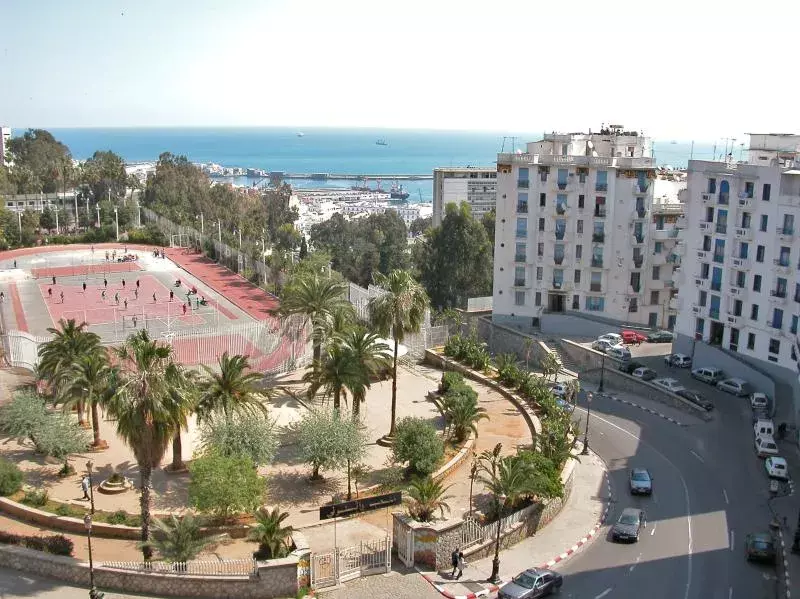
Télémly
Overall Rating: ⭐⭐⭐⭐☆ (4/5)
Rating Breakdown:
✔ Historical Significance – ⭐⭐⭐⭐⭐ (5/5)
✔ Architectural Beauty – ⭐⭐⭐⭐⭐ (5/5)
✔ Accessibility – ⭐⭐⭐☆☆ (3/5)
✔ Cultural Experience – ⭐⭐⭐☆☆ (3/5)
✔ Maintenance & Preservation – ⭐⭐⭐⭐☆ (4/5)
Weather
- Algiers experiences a Mediterranean climate characterized by hot, dry summers and mild, wet winters, making it suitable for visits throughout the year.
Tags
- Historic Neighborhood, Architecture, Cultural Experience, Scenic Views
Timings
- Télémly is a residential neighborhood accessible to visitors at any time.
Time Required
- Exploring the area can take approximately 1 to 2 hours, depending on interest.
Entry Fee
- No entry fee
Things to See & Do
- Architectural Exploration: Admire the neo-Moorish style buildings and other architectural landmarks.
- Scenic Walks: Stroll along Boulevard Krim Belkacem, formerly known as Boulevard du Télemly, which offers panoramic views of Algiers Bay.
- Local Cafés: Experience local life by visiting cafés and shops in the area.
Best Time to Visit
- Late spring (April to June) and early autumn (September to October) offer pleasant weather for walking tours.
Nearest Parking Spots
- Street parking is available but can be limited. Utilizing public transportation or taxis is recommended.
Overview
- Télémly is a historic neighborhood in Algiers known for its rich architectural heritage and scenic views. The area has evolved from a sparsely populated hillside to a vibrant district featuring notable structures and cultural landmarks.
- Boulevard Krim Belkacem: A prominent street offering views and historical significance.
- Pont Burdeau: An architectural feat realized by architect L. Pierre Marie in 1952, exemplifying the concept of "immeubles viaducs" conceived by Le Corbusier.
- The name "Télémly" is believed to originate from the Berber language, either "thala oumlil" meaning "the white source" or "thala oumeley" meaning "the shaded source," referencing the area's natural springs. In the early 20th century, the neighborhood was characterized by the Boulevard du Télemly, a long, winding promenade offering panoramic views of Algiers Bay. Post-1950, Télémly underwent significant development, transforming into a bustling district with imposing buildings.
- Wear Comfortable Footwear: The hilly terrain requires suitable shoes for walking.
- Stay Hydrated: Carry water, especially during warmer months.
- Respect Local Customs: Dress modestly and be mindful of local traditions.
- By Metro: The nearest metro station is "Khelifa Boukhalfa," approximately a 10-minute walk from Télémly.
- By Bus: Several bus lines service the area; check local schedules for details.
- By Taxi: Taxis are a convenient option, with the neighborhood being well-known to drivers.